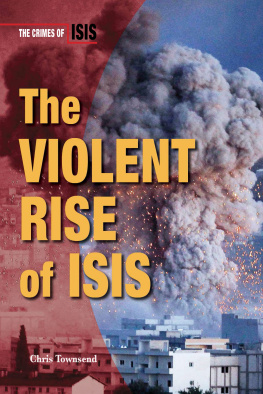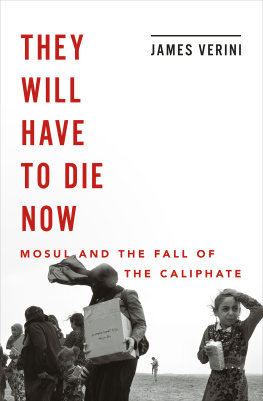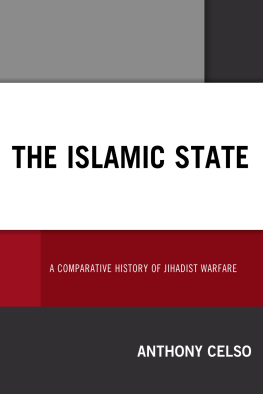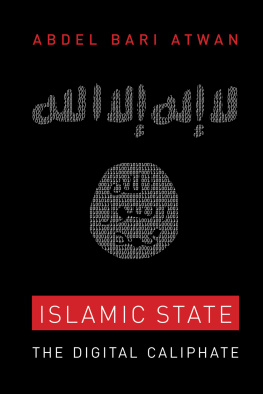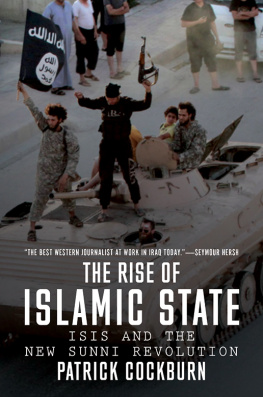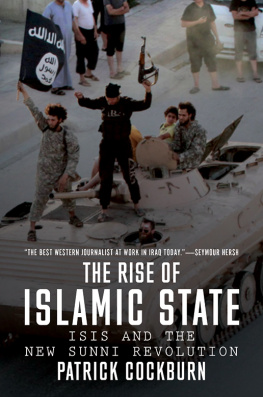Published in 2018 by Enslow Publishing, LLC.
101 W. 23rd Street, Suite 240, New York, NY 10011
Copyright 2018 by Enslow Publishing, LLC.
All rights reserved.
No part of this book may be reproduced by any means without the written permission of the publisher.
Library of Congress Cataloging-in-Publication Data
Names: Townsend, Chris, author.
Title: The violent rise of ISIS / by Chris Townsend.
Description: New York : Enslow Publishing, 2018. | Series: The crimes of ISIS | Includes bibliographical references and index. | Audience: Grades 7-12. Identifiers: LCCN 2017026286 | ISBN 9780766092105 (library bound) | ISBN 9780766095793 (paperback)
Subjects: LCSH: IS (Organization)Juvenile literature. | Middle EastHistory21st centuryJuvenile literature. | TerrorismReligious aspectsIslamJuvenile literature. | Islamic fundamentalismHistoryJuvenile literature.
Classification: LCC HV6433.I722 T698 2018 | DDC 363.3250956dc23 LC record available at https://lccn.loc.gov/2017026286
Printed in the United States of America
To Our Readers: We have done our best to make sure all website addresses in this book were active and appropriate when we went to press. However, the author and the publisher have no control over and assume no liability for the material available on
those websites or on any websites they may link to. Any comments or suggestions can be sent by email to .
Photo Credits: Cover, p. 3 Gokhan Sahin/Getty Images; p. 6 Christophe Simon/ AFP/Getty Images; pp. 8-9 Sebastiano Tomada/Getty Images; pp. 11, 36-37 AP Images; p. 14 CNN/3rd Party-Misc/Getty Images; p. 16 Hurriyet/AP Images; p. 19 Mohammad Hannon/AP Images; p. 23 Dia Hamid/AFP/Getty Images; pp. 2425 Karim Sahib/AFP/Getty Images; p. 29 U.S. Army/Getty Images; pp. 32-33 The Washington Post/Getty Images; pp. 40-41 Bilal Fawzi/AP Images; p. 43, 78, 86-87 NurPhoto/Getty Images; pp. 46-47 JM Lopez/AFP/Getty Images; p. 51 Mir Hamid/Daily Dawn/Gamma-Rapho/Getty Images; p. 52 Francis Dean/Corbis Historical/Getty Images; pp. 54-55 Delil Souleiman/AFP/Getty Images; p. 58 Banaras Khan/AFP/Getty Images; pp. 61, 62 Philip Ojisua/AFP/Getty Images; pp. 66-67 Anadolu Agency/Getty Images; pp. 70-71 Bay Ismoyo/AFP/Getty Images; pp. 74-75 Saleh Al-Obeidi/AFP/Getty Images; p. 80 Dan Kitwood/Getty Images; pp. 82-83 Martyn Aim/Getty Images.
Contents
On July 5, 2014, after the stunning seizure of Mosul, Iraq, a relatively unknown man in black stepped into an Iraqi mosque and declared that the Islamic State of Iraq and Syria, or ISIS, had reestablished the caliphate, an Islamic body of governance not seen since the early days of the religion. Large swathes of Iraq and Syria have been swept under a medieval wave of violence. Other groups as far away as Nigeria and Indonesia have also pledged loyalty to the group, waging their own campaigns of violence. From the beginning, the rise of ISIS has been a violent one.
In the wilds of Afghanistan, a bloody seed took root. Shaped by a decade of violence, a group of fighters would establish a base from which to challenge the world order. These fighters pledged themselves to an idea more than a thousand years old. Early in its history, Islam dominated much of the world. These fighters sought to restore this caliphate of old. They set about achieving their goal with vicious attacks against anyone they deemed a threat. As the group grew, its influence spread from rural Afghanistan. On September 11, 2001, the group, known as al-Qaeda, struck out at a giant, the United States. Thousands of Americans died. The attack would plunge the Middle East into war once more.

Iraqi security forces approach a vehicle that was destroyed during fighting with ISIS in June 2014. Following a decade of war with the United States, Iraq was left unstable, leaving room for ISIS to rise up.
In the chaos, a new group rose to claim the mantle of the caliphate, and ISIS was born. Its violence and brutality would exceed anything that had been seen before. Its attacks against even others of its faith and its extreme level of violence would lead to its exile from its parent organization. Undeterred, ISIS began to build its empire in the deserts of Syria and Iraq. The group seized several towns and forced those who could not manage to flee to live under medieval Islamic laws.
Controlling land, ISIS had what no jihadist terrorist group had possessed since the banning of the caliphate more than a hundred ago. The leader of ISIS declared himself caliph, the leader of all the worlds Muslims. Every Muslim was told to come fight for ISIS or kill infidels in their own lands. A surprisingly sophisticated propaganda and recruiting campaign was waged online for the heart and soul of the Muslim community. Thousands came to fight. Thousands more died.
As the danger expanded, threatening to cover the world with ISISs dark vision for the future, the world pushed back. A coalition of nations that includes military forces in Syria and Iraq has begun to drive ISIS from its lands. Even without its physical territory, though, ISIS will remain a threat unless the world can overcome the conditions that allowed the group to rise to such prominence. ISIS was born in violence. It has created an environment full of violence. It will meet its end in violence. But more than violence is needed to finally put the evil ideology that inspired the group to rest. ISIS rose to power through a never-before-seen campaign of violence, but everything that rises must fall. The violent rise of ISIS is nearing its end.

No group springs wholly formed from the air. Groups like ISIS are descended from and have been shaped by the groups from which they evolved. International aggression and meddling played a part in the groups rise and created an army of holy warriors. Given a safe space to plan and grow, these holy warriors would seek to remake the world according to their dark vision.
THE RUSSIAN DEBACLE
The roots of the Islamic State can be found in the rugged mountains and flowering fields of Afghanistan. During an extended conflict between the Communist government and various Afghan insurgencies, the Soviet Union sent troops and tanks across the border to shore up its failing partner. Thirty thousand Soviet troops flowed into the country, trampling the colorful fields of poppies.
Soviet forces were immediately attacked by tribal forces during the invasion of Afghanistan. The Soviets responded by sending more than 100,000 extra troops into the country to occupy the cities. A Palestinian scholar and preacher in Jordan, Abdullah Azzam, wrote what would become the founding document of a resistance movement. His paper was called The Defense of Muslim Lands, the First Obligation After Faith. It was an opportunity that the United States could not resist.

